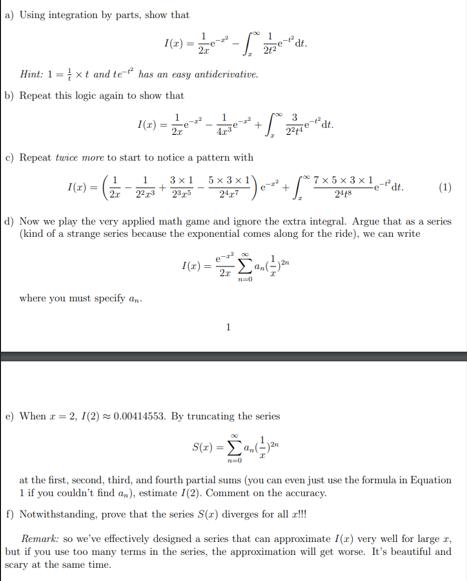Answered step by step
Verified Expert Solution
Question
1 Approved Answer
a) Using integration by parts, show that 1(x)= Hint: 1xt and te has an easy antiderivative. b) Repeat this logic again to show that

a) Using integration by parts, show that 1(x)= Hint: 1xt and te has an easy antiderivative. b) Repeat this logic again to show that 1 21-dr. 1(x)=-2 + c) Repeat twice more to start to notice a pattern with 3 224 e dt. 1(x)= =( 1 1 3x1 + 2x 223 235 5x3x1 24x7 7x5x3x1 + - edt. 248 (1) d) Now we play the very applied math game and ignore the extra integral. Argue that as a series (kind of a strange series because the exponential comes along for the ride), we can write I(x)= a) 2r where you must specify an 1 e) When r=2, 1(2) 0.00414553. By truncating the series S(x)=() at the first, second, third, and fourth partial sums (you can even just use the formula in Equation. 1 if you couldn't find a,), estimate I(2). Comment on the accuracy. f) Notwithstanding, prove that the series S(r) diverges for all z!!! Remark: so we've effectively designed a series that can approximate I(r) very well for large 1, but if you use too many terms in the series, the approximation will get worse. It's beautiful and scary at the same time.
Step by Step Solution
★★★★★
3.34 Rating (163 Votes )
There are 3 Steps involved in it
Step: 1

Get Instant Access to Expert-Tailored Solutions
See step-by-step solutions with expert insights and AI powered tools for academic success
Step: 2

Step: 3

Ace Your Homework with AI
Get the answers you need in no time with our AI-driven, step-by-step assistance
Get Started


